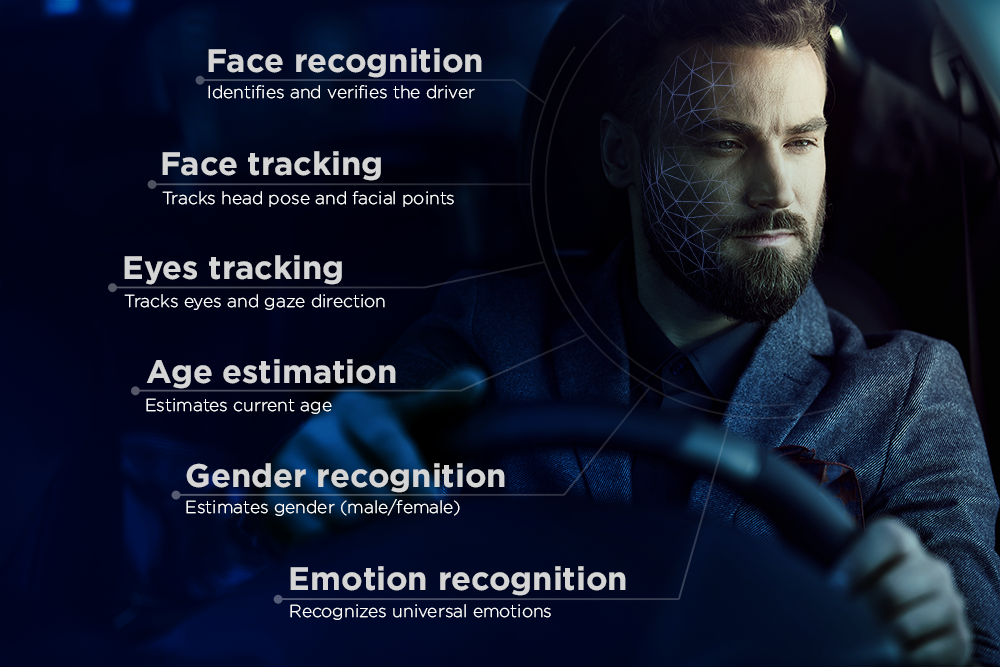Human error is the cause of most car accidents. To prevent accidents caused by fatigue, inattentiveness, and distractedness, the latest car models come with a built-in driver monitoring system (DMS) that assists the driver in reaching their destination safely.
The system’s purpose is to look for any signs of fatigue, distraction, anger or similar states in order to trigger the appropriate safety measures when necessary. Monitoring includes detecting where the driver’s head is, where they are looking, whether they are drowsy, etc. The main goal is to ensure that the driver remains focused on driving, but it can also be used to improve the safety and comfort of everyone in the cabin.
Head and gaze tracking
The basis of a driver monitoring system is head tracking which detects and tracks the driver’s head. Combined with gaze tracking, it allows the system to determine the driver’s viewing direction and attention level.
For example, if the driver is tired or intoxicated, it typically manifests with the head dropping down, closed or barely-open eyes and sudden head movements as they’re trying to stay awake. The driver can also get distracted by their phone, traffic, or something that’s happening in the cabin (for example, a heated discussion with other passengers).
In any case, the driver’s focus is no longer on the road ahead, which increases the chances of an accident. DMS can detect such states and trigger appropriate safety measures to warn the driver and help bring their attention back to the road.
A more advanced system can even adjust the car settings such as seat position or mirrors to the driver’s eyes.
Face analysis
Besides the driver, it's useful to monitor other passengers in the vehicle as well. Face analysis can be used to provide demographic information (age, gender) of everyone in the vehicle. Such information is valuable in case of an emergency, but it can also help increase the general safety of the passengers (for example, it can warn the parents about a child being left unattended in the vehicle).
FaceAnalysis can also estimate the emotions of the driver and the passengers. For example, it can be used to detect “undesirable” emotions such as anger. It can, then, trigger safety measures, such as playing relaxing music, suggesting a different route, or slowing the car down.
Furthermore, car settings such as content recommendations, lighting or heating, can be personalized to the driver’s or passengers’ moods and states.
Face recognition
Driver monitoring systems that can recognize the driver can provide a range of useful functionalities. For example, only verified persons can get access rights, which prevents car theft. The system can also remember someone’s preferences and restore them when an authenticated person enters the car. For example, the car can automatically adjust the seat, modify the position of mirrors, turn on the driver’s favorite music and more.
Driver monitoring systems play a huge role in the transition from manual to (semi)autonomous driving. To truly minimize the work for the driver and maximize safety at the same time, they need to be based on reliable software. visage|SDK combines face tracking, analysis and recognition, making it easy to develop a comprehensive solution.

Visage Technologies consulting and custom development services are available to adapt the technology in terms of precision, performance and any other requirements in order to meet the needs of specific applications. |